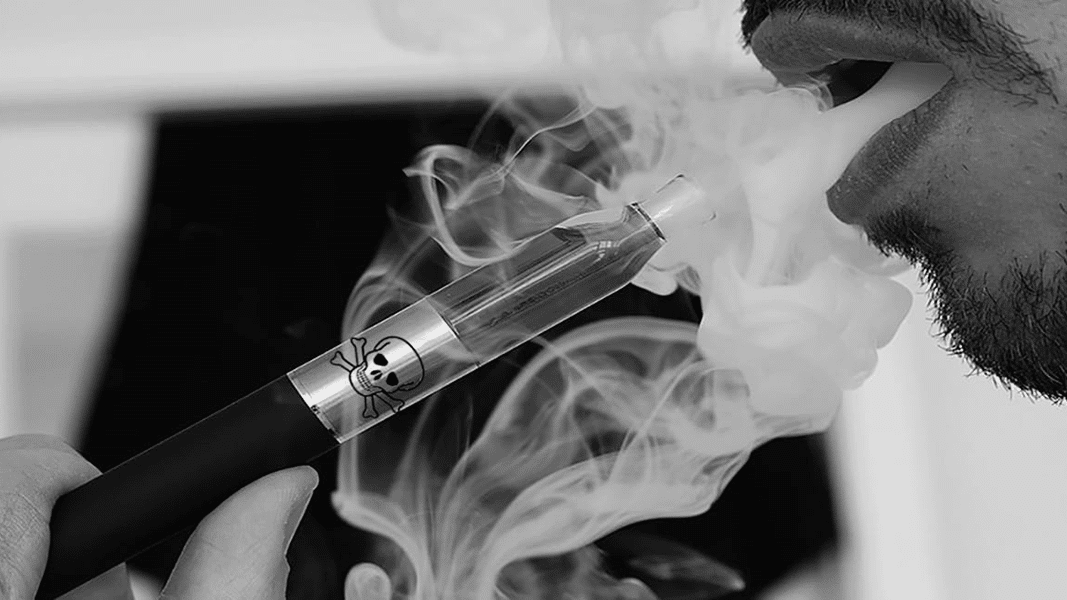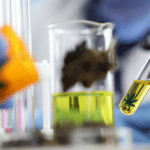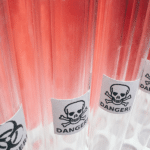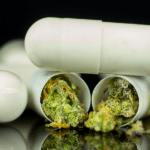In the summer of 2015, Project CBD published a report by Dr. Jahan Marcu that exposed the potential hazards of heating and inhaling propylene glycol (PG), a widely used thinning agent in many cannabis oil products, including vape pen cartridges. Project CBD was the first cannabis industry watchdog to call attention to research showing that when PG is heated in an electronic vaporizer, it can decompose into formaldehyde, a potent carcinogen. We noted with concern that thinning agents such as PG are typically present in hemp-derived CBD oil extracts. Nearly every hemp CBD vape oil brand we examined included PG or, even worse, polyethylene glycol (PEG), another toxic additive.
Beyond Propylene Glycol
A recent peer-reviewed article in the Journal of Alternative and Complementary Medicine (JACM) validated the dangers of PG and presented evidence that PEG is even more hazardous when heated. Scientists at the Medical Marijuana Research Institute in Arizona studied the degradation of PG, PEG, vegetable glycerin, and medium-chain triglycerides (such as coconut oil). They heated these compounds to 230˚C, a high but plausible temperature for a vaporizer. PEG produced a large amount of acetaldehyde and formaldehyde, two carcinogens. Their work also confirmed that PG decomposes into formaldehyde at this temperature.
“[F]ormaldehyde inhalation has been linked to increased incidence of myeloid leukemia and nasopharyngeal cancer,” the scientists noted. They determined that the amount of formaldehyde produced by heating pure PEG is comparable to the amount of formaldehyde one inhales when smoking a single tobacco cigarette. Medium-chain triglycerides produced a tiny amount of acetaldehyde (approximately 33 times less than PEG). And vegetable glycerin did not produce detectable amounts of any of the toxins studied.
Combustion Is Not Vaporization
Vaporizing cannabis is supposed to be a healthier mode of administration than smoking cannabis. But much depends on the quality of the product. In theory, vaporization is supposed to heat the oil enough to release volatile terpenes and cannabinoid compounds (THC, CBD) into the air, but not enough to create smoke. Rather than burning cannabis, which occurs at temperatures above 400˚C, vape oil only needs to be heated to around 160-190˚C for the cannabinoids and terpenes to aerosolize. But the byproducts from chemical reactions that occur around 200˚C aren’t inherently safer than those created by reactions at 400˚C.
In general, very high temperatures are needed to produce carbon monoxide and the many other toxins in smoke. But this doesn’t guarantee the safety of heating unstable chemicals without causing combustion. Compounds like PEG, PG, and certain pesticides degrade into stronger toxins at temperatures that cause cannabinoids to vaporize. For example, the pesticide myclobutanil, sold as Eagle-20, decomposes into hydrogen cyanide when heated.
Since cannabinoids vaporize at temperatures slightly below 230˚C, it is possible to avoid the harms associated with heating cannabis oil mixed with PG or PEG. But in practice, vaporizers rarely distribute heat evenly. The oil closest to the heating unit often reaches a higher temperature than expected, particularly with vape pens and other handheld electronic vaporizers.
Regulating Vapes
These problems have arisen in part because regulations don’t always account for how chemicals are actually consumed—vaporizing, ingesting, and smoking are all fundamentally different ways of administering cannabis. PG is generally recognized as safe to ingest by the FDA, but heating and inhaling it is a different matter entirely. “Cannabis oil that is produced for vaporization is often mixed with PEG 400 or PG, which may result in exposure to harmful carcinogenic compounds and subsequent health risks… Patients and policy makers should consider these potential concerns and health effects before use and when drafting legislation that regulates cannabis products,” the JACM report concluded.
Many compounds—thinning agents, pesticides, etc.—are safety tested for ingestion or topical application, but until recently little attention has been paid to what happens if they are heated and absorbed. Some compounds, such as PG and PEG, become more toxic through heat exposure. Others are likely to break down into less harmful components. It is imperative to consider the context in which these chemicals are used, rather than assuming they are safe for the sake of commerce.
Adrian Devitt-Lee is a research scientist and longtime Project CBD contributor. © Copyright, Project CBD. May not be reprinted without permission.
References
- Marcu, Jahan. How Safe is Your Vape Pen? ProjectCBD.org. July 14, 2015.
- Troutt William D. and DiDonato Matthew D. Carbonyl Compounds Produced by Vaporizing Cannabis Oil Thinning Agents. The Journal of Alternative and Complementary Medicine. March 2017, ahead of print. doi:10.1089/acm.2016.0337.








